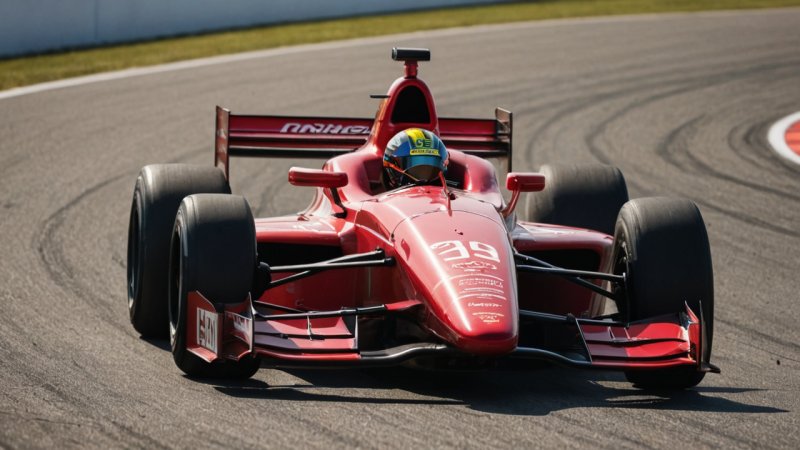In the high-octane world of motorsports, where every millisecond counts and the difference between winning and losing can hinge on the most minute adjustments, the significance of car setup cannot be overstated. From the aerodynamic design to the suspension tuning, every facet of a vehicle’s configuration plays a crucial role in how a driver interacts with the car on the track. This article delves into the intricate relationship between car setup and driver performance, exploring how various adjustments can enhance speed, control, and safety while ultimately determining a driver’s success.
Aerodynamics: The Foundation of Performance
Aerodynamics is one of the most critical aspects of car setup, influencing both speed and handling. The shape of the car, the angle of the wings, and even the position of the mirrors contribute to how air flows around the vehicle. A well-designed aerodynamic setup reduces drag and increases downforce, enabling the car to maintain stability at high speeds. For instance, racing teams often adjust the angle of the front and rear wings to find the optimal balance between downforce and drag. This balance is essential not only for straight-line speed but also for cornering ability, allowing drivers to push their vehicles to the limit without losing control.
Suspension Tuning: The Key to Handling
The suspension system of a race car is vital for maintaining contact between the tires and the track. Proper suspension tuning can significantly affect a car's handling characteristics. Adjustments to spring rates, damper settings, and ride height can all be made to tailor the car's behavior to the driver's preferences and the specific demands of the track. A stiffer suspension setup may improve responsiveness but can lead to a harsher ride, while a softer setup might enhance comfort but compromise performance in high-speed corners. Finding the right balance is crucial, as it allows drivers to feel more connected to the vehicle and enhances their confidence, ultimately translating to improved lap times.
Tire Pressure and Grip: The Connection to Performance
Tire pressure is another critical parameter in car setup that directly influences performance. The right tire pressure ensures optimal contact with the track surface, maximizing grip and stability. Too high or too low tire pressure can lead to uneven tire wear, reduced traction, and compromised handling. Drivers must work closely with their teams to monitor tire performance and make necessary adjustments based on track conditions and driving style. Additionally, the choice of tire compound and its temperature also play a significant role in overall grip, making tire management an essential aspect of race strategy.
Weight Distribution: Balancing Act
Weight distribution affects how a car behaves under various driving conditions. An ideal weight distribution allows for better traction and stability, especially during acceleration and braking. Teams can adjust weight distribution by repositioning components or adding ballast to specific areas of the car. For instance, a front-heavy setup might provide better traction during acceleration, while a rear-heavy setup could enhance stability under braking. Each track presents unique challenges, and understanding how to manipulate weight distribution can help drivers optimize their performance based on the specific demands of the circuit.
Driver Feedback: The Human Element
While technical adjustments are essential, the driver’s feedback is invaluable in the setup process. Experienced drivers can provide insights into how the car behaves under different conditions, guiding engineers in making the right adjustments. Communication between the driver and the engineering team is crucial for fine-tuning the setup to suit individual driving styles. A driver who feels comfortable and confident in their car is more likely to push its limits, leading to improved performance on the track.
Technological Advancements in Setup Analysis
The evolution of technology has significantly impacted how teams approach car setup. Data acquisition systems allow teams to monitor a plethora of variables in real-time, including tire temperature, suspension movement, and aerodynamic forces. This data-driven approach enables teams to make informed decisions about car adjustments and track conditions. Moreover, simulation software can predict how changes in setup will affect performance, allowing teams to test various configurations before even hitting the track. As technology continues to advance, the ability to optimize car setup will only grow, further enhancing driver performance.
Safety Considerations in Car Setup
While performance is paramount in motorsports, safety must never be overlooked. A well-balanced car that handles predictably is not only faster but also safer. Proper setup can minimize the risk of accidents by ensuring that the car behaves consistently in various conditions. Furthermore, teams must consider the impact of setup changes on the car's crashworthiness. Adjustments that enhance performance should not compromise the structural integrity or safety features of the vehicle.
Conclusion
The impact of car setup on driver performance is profound and multifaceted. From aerodynamics and suspension tuning to tire management and weight distribution, every aspect plays a crucial role in how a driver experiences the vehicle on the track. The interplay between technical adjustments and driver feedback creates a dynamic environment where success hinges on the ability to adapt and optimize. As technology continues to evolve, the relationship between car setup and performance will only grow more intricate, underscoring the importance of continuous learning and adaptation in the pursuit of excellence in motorsports.






